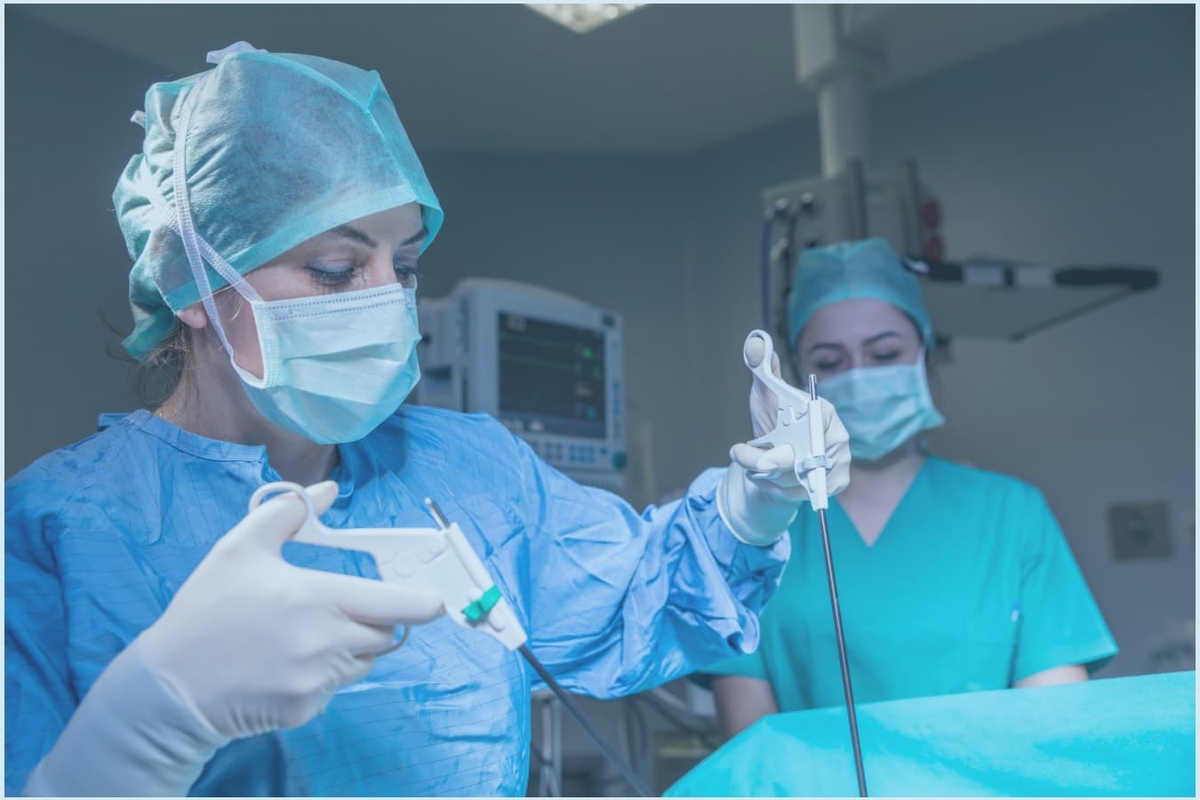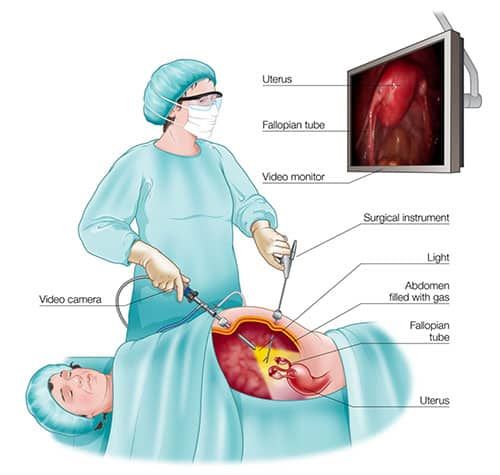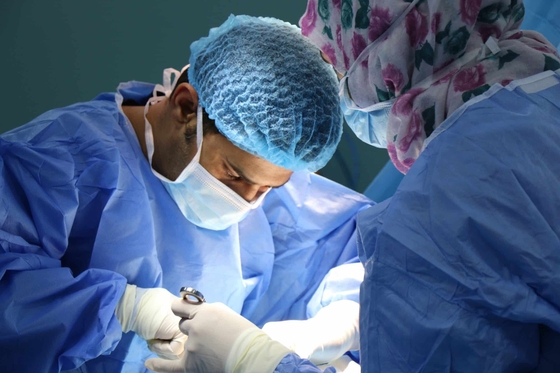Fertility Testing
Laparoscopic Surgery for Infertility
Specialised key-hole surgery allowing access to the reproductive organs without the need for an invasive, open abdominal procedure.


What is a laparoscopy?
A laparoscopy is a surgical procedure where a narrow, fibre optic tube is inserted through the skin of the abdomen through a pair of very small incisions to enable the specialist to see the abdominal contents and reproductive organs.
Why is a laparoscopy used?
A laparoscopy is the most reliable technique for the diagnosis of otherwise unexplained infertility.
It allows the surgeon the ability to operate within the abdominal cavity without making any large skin incisions or opening up the abdomen, which makes these operations less painful, less invasive and allows a more speedy recovery with minimal to no scarring.
Do I need a laparoscopy?
In patients who have symptoms that are suggestive of gynaecological disease, such as endometriosis or pelvic adhesions, a laparoscopy enables the doctor to both diagnose and treat any condition that may be identified.
Laparoscopy is also used to investigate otherwise unexplained infertility, as well as poor response to infertility treatments.
How is a laparoscopy performed?
For a diagnostic laparoscopy, two incisions are made – one just at the base of the navel and the other at the top of the pubic hair line. These are both small and do not require sutures to close them. The resulting scars are small and will gradually fade until they are almost impossible to see.
For operative laparoscopies, a third small incision is made in the lower left side of the abdomen and for more complicated procedures, a fourth small incision may be required in the right lower abdomen also.
To create the space necessary to work within the abdominal cavity, warmed, humidified carbon dioxide gas is pumped in and then let out at the end of the operation.

How will a laparoscopy make me feel?
Anaesthetic agents affect people in different ways but common side-effects include drowsiness, dizziness and nausea. These effects are generally short-lived, lasting less than 24 hours, and are managed by the anaesthetic specialists involved.
The small incisions from the operation can cause a variable amount of post-operative pain, depending upon thickness of the abdominal wall and the degree of local bruising. Discomfort generally persists and hinders mobility for 3-5 days.
The medical gas used to inflate the abdomen may also irritate the diaphragm, which can result in referred pain in the shoulder and chest, and occasionally vomiting, after the procedure has been completed. Some relief from this may be achieved by putting your hips on a pillow so that they are higher than your chest.
For all symptoms, the severity can be minimised by the use of a warm compress and taking mild pain killers as directed. Whilst uncomfortable, these symptoms will disappear gradually over 3-5 days.
How long will it take me to recover from advanced laparoscopic surgery?
Recovery from laparoscopic surgery is generally quick, usually taking between 7 and 14 days but like all invasive surgery, the recovery following more involved operative laparoscopic procedures initially involves 24 to 48 hours of abdominal cramping, nausea, loss of appetite and some constipation, followed by generalised weakness and tiredness.
Some relief from this may be achieved by putting your hips on a pillow so that they are higher than your chest and also taking mild pain killers as directed. These symptoms will disappear gradually over 3-5 days.

What are the potential risks involved in a laparoscopy?
Laparoscopy for infertility is a minor procedure with relatively low risks, however, it is still a surgical procedure involving a general anaesthetic. Risks that are specific to laparoscopy are bowel injury (approximately 1 in 1000 cases) and vascular injuries (approximate risk of 1 in 10,000 cases).
Other risks which accompany any form of surgery are haemorrhage, reactions to general anaesthesia, and the risk of post-operative infection. Some scarring is inevitable but because the skin incisions are approximately 5mm long, once healed they are very hard to see.
